In 1884 and 1885 Van Gogh created several church paintings depicting two different churches, both in the small village of Nuenen in the North Brabant district of the Netherlands. It was here that Van Gogh’s father became a pastor in 1882. Congregation Leaving the Reformed Church in Nuenen, 1884 is a painting of his father’s church.
Van Gogh painted Congregation Leaving the Reformed Church in Nuenen, 1884 for his parents. His mother had experienced a broken thighbone and Van Gogh wrote to his brother, Theo, updating him on her recovery and saying,
“The other day I painted for her a little church with the hedge and the trees (like this).
You will easily understand that I love the scenery here.”
The drawing he included in his letter shows one peasant holding a spade over his shoulder standing or walking in front of the church. X-ray examination of the painting of the same scene shows that the congregation members leaving the church in Nuenen and the autumn leaves on the trees were added later. There is a woman in mourning shown in the painting and it is believed that the woman and the congregation members surrounding her were added following the death of Van Gogh’s father in the spring of 1885. The addition was most likely a representation of his mother and an attempt to connect the painting with his father as a memorial to his death.
Congregation Leaving the Reformed Church in Nuenen, 1884 is no longer on display after being stolen from the Van Gogh Museum on December 7, 2002. Read more about the theft here.
The other church paintings from Nuenen are of the Old Church Tower and are titled Old Church Tower at Nuenen, The Parsonage Garden at Nuenen, The Old Tower at Nuenen with a Ploughman, The Old Tower of Nuenen with People Walking, and The Old Cemetery Tower at Nuenen in the Snow. It is believed that there were eleven drawings and paintings of the church tower made by Van Gogh.
In most of the paintings of the old church tower Van Gogh displays the church in its better days with its spire still intact and its foundation solid. In reality, the spire of the church had been torn down in 1792 and the building tower was crumbling and being torn down and sold for scrap while Van Gogh was completing his paintings.
In The Old Church Tower at Nuenen (The Peasants’ Churchyard) we see the church without its spire. Van Gogh wanted to express the simplicity and sobriety of a peasant churchyard. In a letter to his brother, Theo, in June of 1885 he said,
“I have omitted some details – I wanted to express how those ruins show that for ages the peasants have been laid to rest in the very fields which they dug up when alive – I wanted to express what a simple thing death and burial is, just as simple as the falling of an autumn leaf – just a bit of earth dug up – a wooden cross. The fields around, where the grass of the churchyard ends, beyond the little wall, form a last line against the horizon – like the horizon of the sea.”
In this painting Van Gogh showed the church in a state of disrepair and tried to express the declining influence of Christianity. In his letter to his brother he said,
“And now those ruins tell me how a faith and a religion mouldered away – strongly founded though they were – but how the life and the death of the peasants remain forever the same, budding and withering regularly, like the grass and the flowers growing there in that churchyard.”
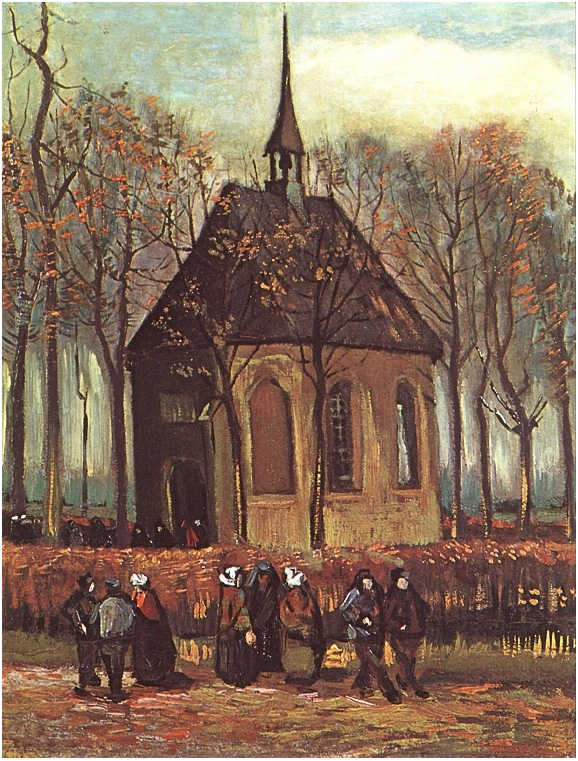 |
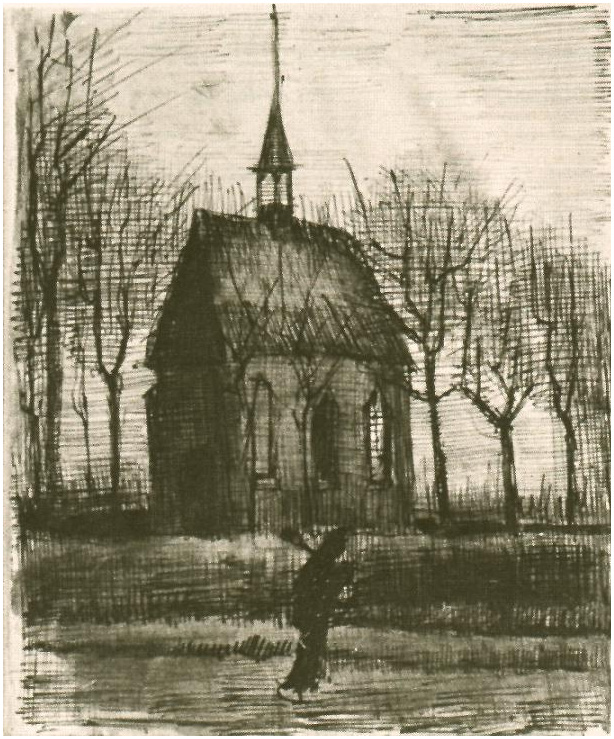 |
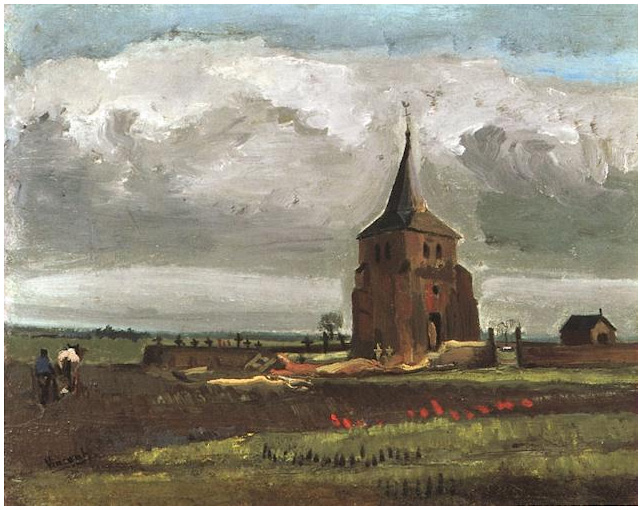 |
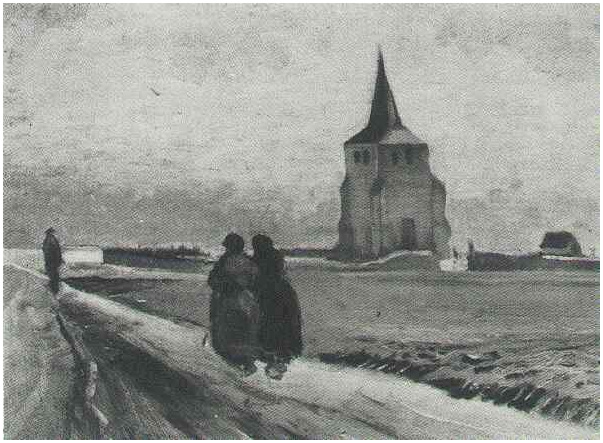 |
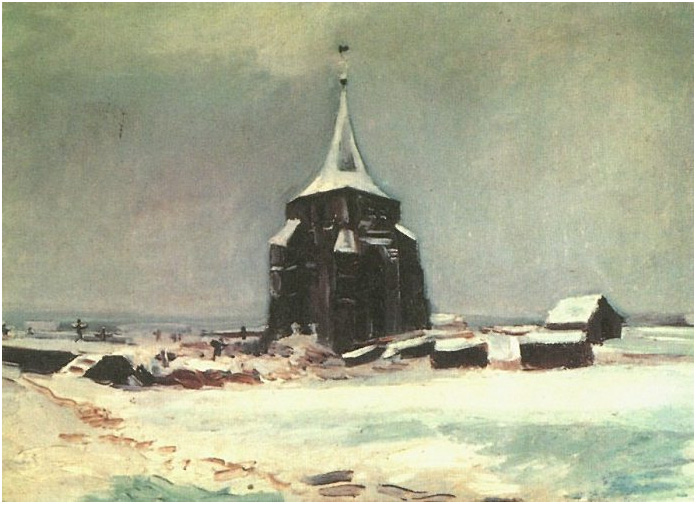 |
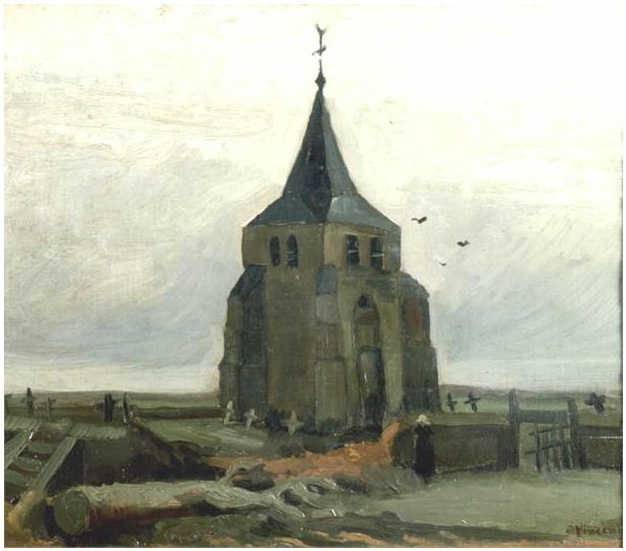 |
.jpg) |
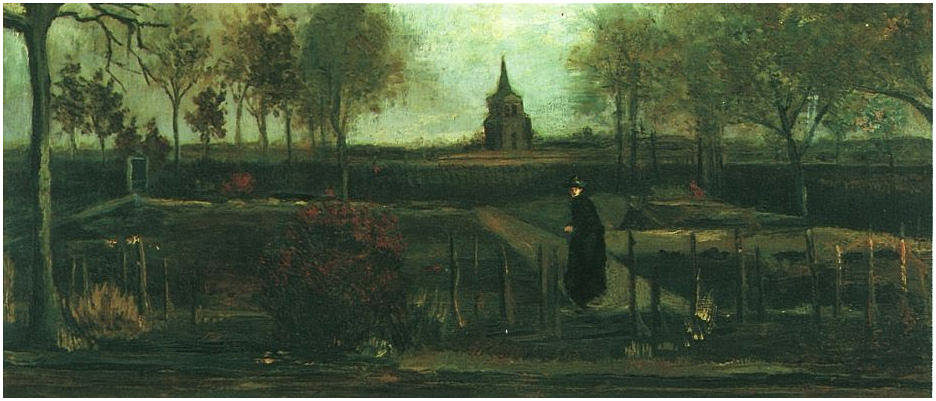 |
Letter Source:
http://www.webexhibits.org/vangogh/letter/14/355.htm

I am so amazed by the paintings at that time. Van Gogh and the other artists at that time were so creative and talented that their art echoed through generations without failing to impress even artists of this time. They were geniuses that comes once in a very long while.